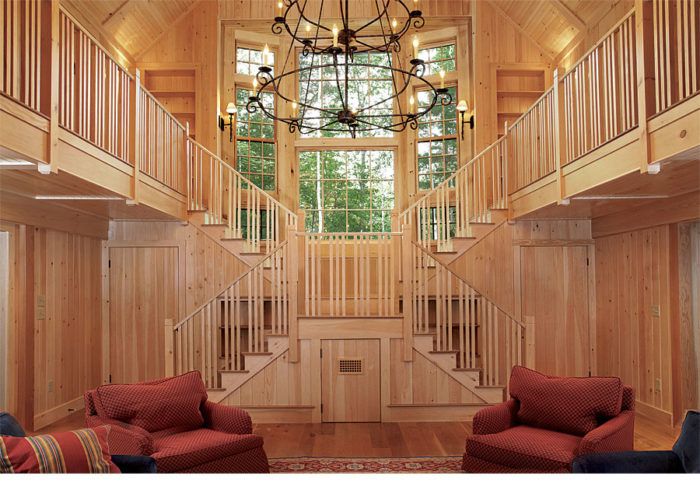Balanced Balusters
Simple calculations make for a much more accurate spacing method.

Synopsis: Methods of figuring out the baluster layout for a stair can involve a time-consuming combination of measuring and calculating. Designer Michael Maines uses a simple method that gives him a precise layout every time, whether he’s designing a layout with single or grouped balusters, and whether the stair uses open or closed stringers.
There are countless methods people swear by for laying out balusters. Many of them take a great deal of time and, in the end, are not very precise. I use a method that gives me a precise layout on the first try, on both simple and complicated railing designs.
The symmetrical balustrade pictured in this article was designed by the architecture firm Albert, Righter & Tittmann and built by Fine Lines Construction. A project of this scope illustrates the importance of being able to accurately determine the spacing and number of balusters.
Basic baluster equation: A ÷ (A ÷ B) = C
By adding the width of a baluster or group of balusters to the length between newels, this simple equation calculates the number of balusters or groups and the centerline measurement needed for your layout.
SINGLE: The length between newels plus the width of one baluster is A. B is the width of one baluster added to a code-compliant baluster space. Divide A by B. Round the quotient up if the baluster space is equal to the code maximum; you can round the quotient up or down if the space is less than the code maximum. The rounded quotient is the number of balusters needed, including the phantom one. Now divide A by the rounded quotient to calculate C, the centerline spacing used for layout. Note that the first centerline will be less one-half the width of a baluster. Example: 50 ÷ (50 ÷ 6 = 8.3 [rounded up to 9] ) = 5.5.
GROUPED: The same math works for grouped balusters, but B is the width of the group added to a code-compliant space. The first layout mark is the centerline dimension less one-half the width of the group.
CLOSED STRINGER: Perhaps counterintuitively, a closed-stringer stair is calculated as if it has a level balustrade. There is no special equation for an open-stringer stair, where code and the width of the tread drive the baluster position.
For more photos and details, click the View PDF button below:

























View Comments
Nice equation. I like to switch to metric when laying out balusters, as i find the whole numbers easier to work with.